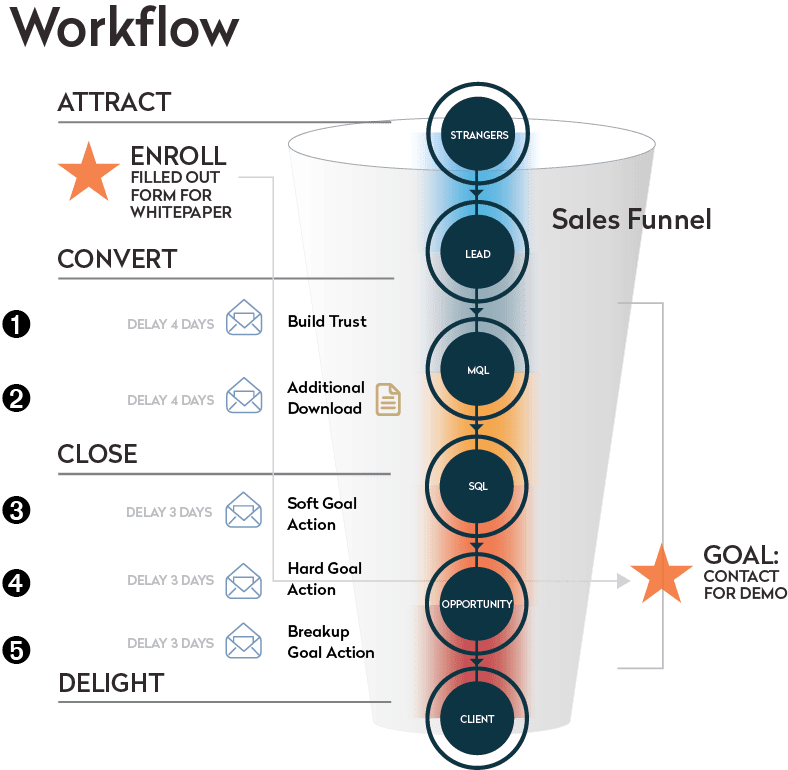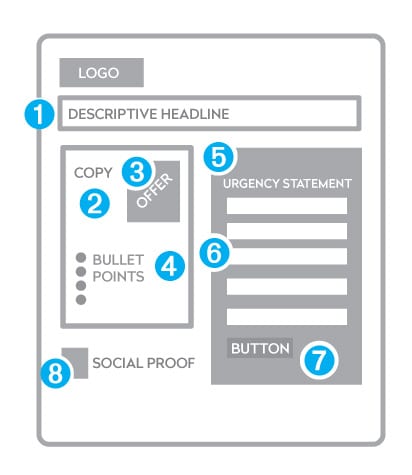
When it comes to winning more business—it can sometimes be difficult not to blow your own horn when communicating with your customers and prospects.
By understanding how to talk to their level and helping them think differently about their business by solving their problems first, you will have greater success in moving them further down your sales funnel and converting them into a customer.
As professionals, we eat, sleep and breathe our vocations. What has become second nature to us—can be jibber-jab to our prospects. We ultimately believe our products or services are the best and everyone needs them. However, what is apparently obvious to you, may not be to your customer.
If you find yourself losing sale opportunities for no apparent reasons, it may be time to take a look at how you may (or may not) be talking to your customers.
To start, you need to understand how consumer behavior has shifted in the past 2-3 years.
Research has shown that your customers will go to the internet (search engines, social media, local directories, review sites) to consult on average 10.4 pieces of content—before they even contact you. The internet is the first place where over 90% of all B2C and B2B prospects will go when beginning research for a potential purchase.
To win more business, business owners, marketers and business developers need to know how they can maximize their sales processes within this new paradigm.
Below are 8 points to keep in mind when talking to your customers so you can win more business.
1. Create buyer personas
Buyer personas are fictional representations of your ideal customers. They are based on real data about customer demographics and online behavior, along with educated speculation about their personal histories, motivations, and concerns.
We sometime lose sight and think we know our customers fairly well, but it quickly becomes apparent—once we begin to peel back the layers—how much we think we know is based only on assumptions—not facts.
In order to talk to your customers level and win more business you must put yourself in their shoes and get to their level of understanding and motivations of what their challenges are and identify the solutions that can best help them. This can only be done by researching and identifying your buyer persona.
2. Research your prospect on social media
If you don’t have a buyer persona strategy in place, the next best thing is LinkedIn. If you have time in between your first contact and sales meeting—it’s good to check who the prospect is on LinkedIn and on other social media networks. Top sellers use LinkedIn 6 hours per week. (SOURCE: Jill Konrath, Author of Snap Selling)
Knowledge and familiarity of your prospect will allow you to break down any mental barriers in your mind before speaking to your prospect, which can build confidence. Knowing something personal about them is good so you can determine if you have something in common (sports, hobbies, contacts, locations etc.). It’s always better to talk about a common interest than the weather to break the ice. People ultimately choose to do business with people they like, and everyone likes someone who appreciates them. (Source: Forbes)
3. Assume nothing
You should always assume your prospect knows nothing about you or what you offer and vice versa for the first call. Assumptions can taint the waters in sales meetings/calls and can make you look uninformed.
4. Help them think differently about their business
A few years back, CEB came out with a new sales model called the Challenger Sale that has been adopted by top companies. This model is based upon sales people helping customers with their problems first—which builds trust, leads to higher customer satisfaction and faster closings.
“The way to effectively sell your product is to make sure your customer believes you are there to help them win in the market.” — Tyrone Edwards, SVP of Sales and Marketing, Merck Pharmaceuticals
This is a radical departure from the past were sales was more about promotion. By helping your customer understand their problem and identifying those drivers, you can help your customer succeed, which is ultimately why they are contacting you.
5. Scrap the jargon
No one cares, especially your prospect that you know your industry’s terminology—better to save it for the trade show. By knowing your buyer persona, you will know their industry lingo. However, it’s still better to speak professionally with articulation and intelligence and keep the jargon to a minimum.
6. Utilize marketing automation to better qualify your prospect
One of the greatest benefits of sales and marketing automation is that you have the ability to potentially warm your prospects up to your products and services prior to having a conversation with them. This allows you to see—through web analytics (email, clicks, downloads, likes, tweets etc.)—if your prospect has interest in your offerings. This allows you to gain insight into how to better help them. Most tools will also allow you to capture information about your prospect so you can know exactly who they are and if they are a viable lead.
7. Create a process
All good sales people have a process to help them win more business. By utilizing a questioning process, you get your prospect talking about their business, problems and challenges and how you can help them—versus rambling on about how great your solutions are. A good process follows Challenges, Goals, Plans, Timing, Implications, Consequences, Budget and Authority through the buyer stages of Awarrness, Consideration and Decision Ask questions that cover their company and their organization (internal). For example:
- What are your biggest challenges?
- What is your secret sauce?
- Who are your competitors?
- What is your average sales price?
- What are your company’s revenue targets?
- How do you fit within your company?
- What is the decision making process?
- What are your goals?
… are just a few good questions to ask.
8. Help. Don’t sell.
Lastly, ditch the pitch. Assuming your brand and website has done its job—your prospect will already be convinced that you can help them. Be prepared to show a little transparency and authenticity. This will go a long way in earning trust and credibility.
Marcus Sheridan of The Sales Lion states: “Consumers of all types expect to find answers on the internet, and companies that can best provide that information garner trust and sales loyalty. Success flows to organizations that inform, not organizations that promote.”
In conclusion, to win more business you must be helpful, you must create and understand your buyer persona, research your prospect on social media, assume nothing about your prospect, help them to think differently about their business, scrap the jargon, take time to better qualify them and above all—help, don’t sell.







